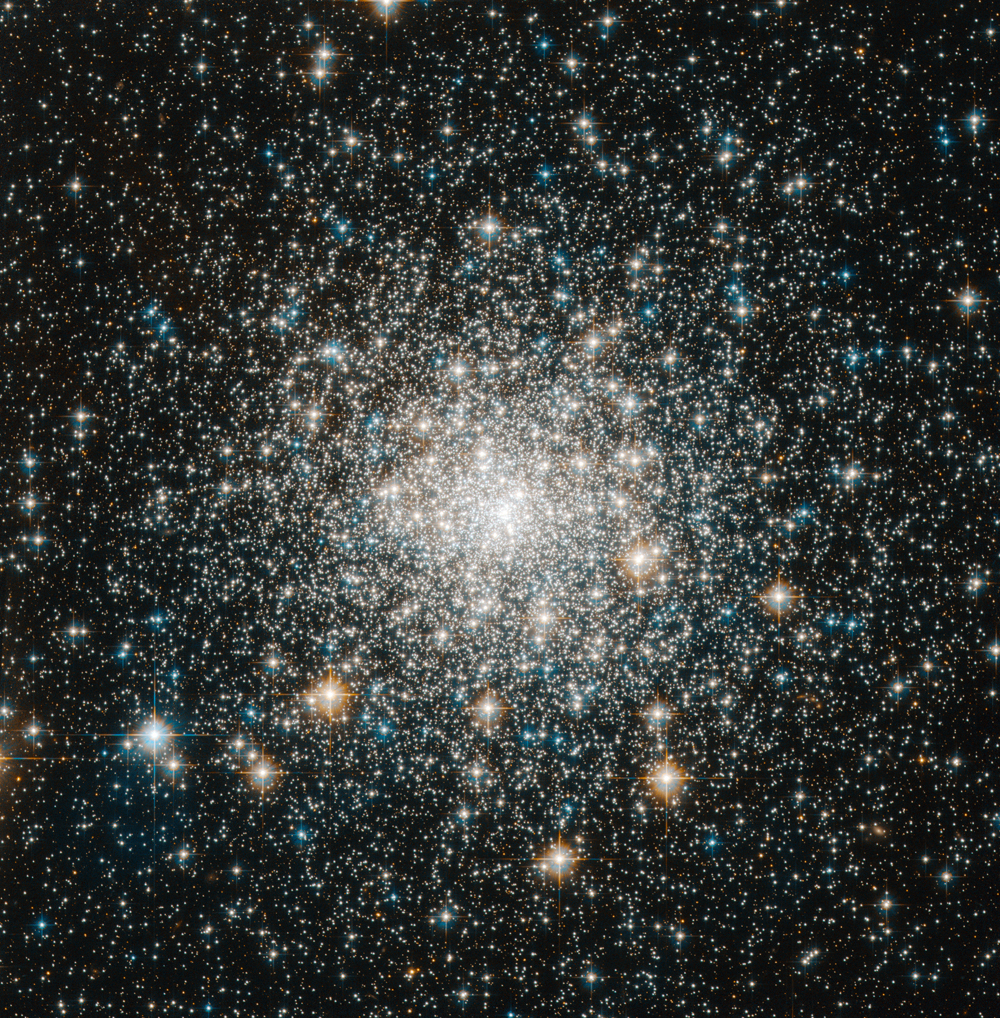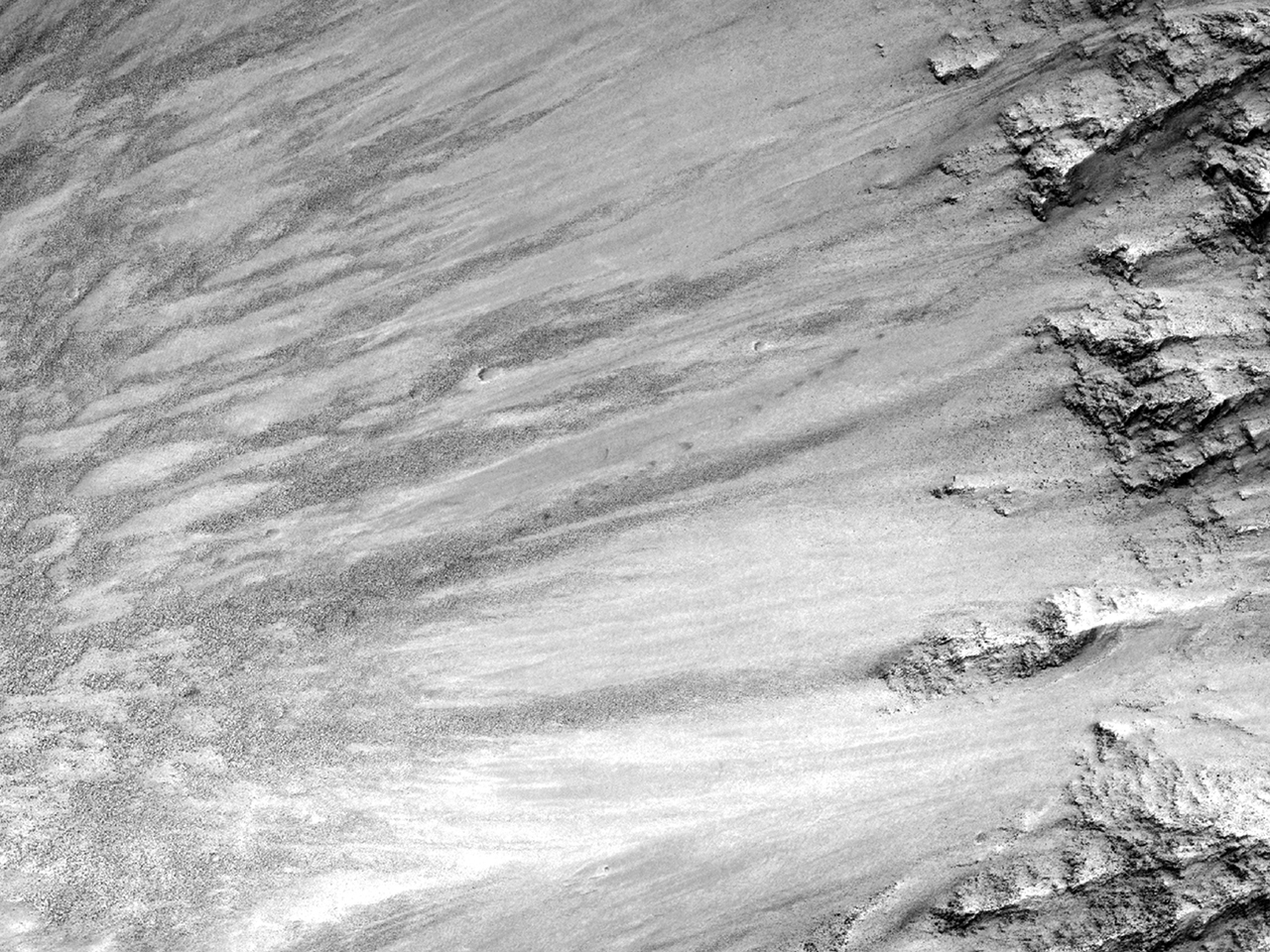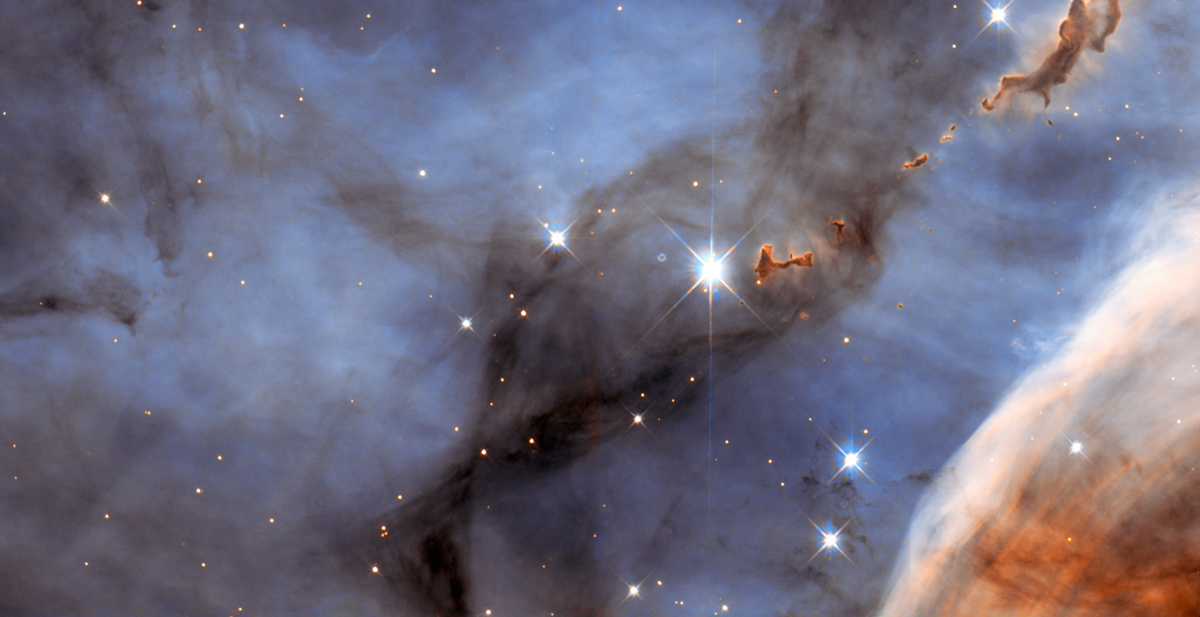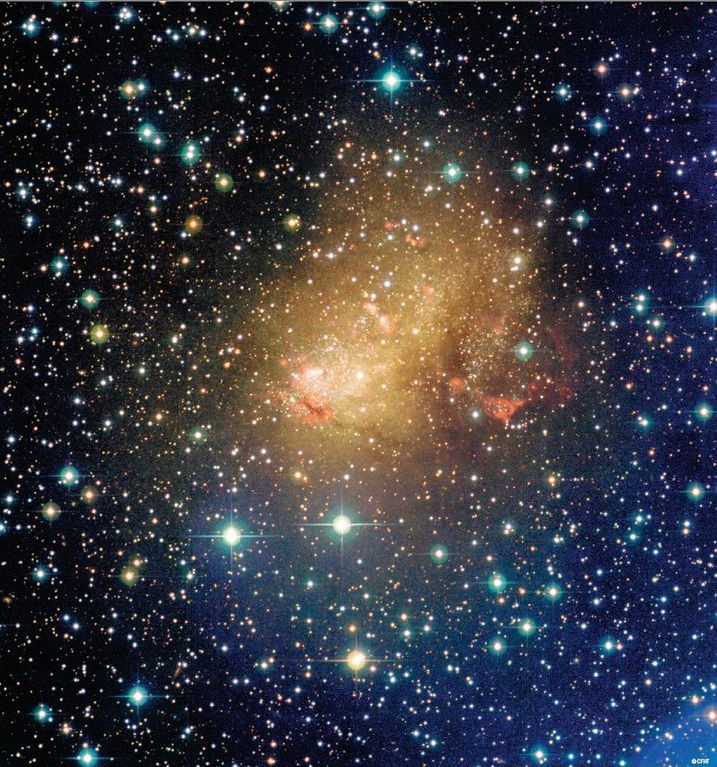Image of the Day: April 2012
Packed!
Tuesday, April 17, 2012: Globular cluster Messier 70 experienced a core collapse in the past, meaning that even more stars squeeze into the object's core than on average, such that the brightness of the cluster increases steadily towards its center. Messier 70 orbits close to the center of the Milky Way, about 30 000 light-years away from the Solar System. Image released April 13, 2012.
— Tom Chao
Flying Home
Wednesday, April 18, 2012: Space shuttle Discovery, atop a NASA 747 Shuttle Carrier Aircraft, flies near the U.S. Capitol, Tuesday, April 17, 2012, in Washington, D.C. NASA will transfer Discovery to the Smithsonian Institution’s National Air and Space Museum, where it will remain on display. The two people on top of the Capitol dome had the best view of all!
— Tom Chao
Lurker
Thursday, April 19, 2012: Saturn's icy moon Enceladus floats below the gas giant's rings while another moon, Titan, lurks in the background, in this image taken by the Cassini spacecraft on March 12, 2012.
— Tom Chao
High and Dry
Friday, April 20, 2012: The Atacama Pathfinder Experiment (APEX) telescope looks skyward during a moonlit night on Chajnantor Plateau in Chile, one of the highest and driest observatory sites in the world. On the left shines the tail of the constellation of Scorpius, the Scorpion. Across the sky stretches the plane of the Milky Way. Elsewhere in this photo, one can see the constellation of Sagittarius, The Archer, looming over APEX’s dish. Also, Messier 7 (AKA Ptolemy’s Cluster), Messier 6 (the Butterfly Cluster), and the Lagoon Nebula all appear here. Image released April 16, 2012.
— Tom Chao
Green
Monday, April 23, 2012: Auroramax, an automated camera that photographs auroras in Canada, took this photo. It tweeted: "Latest image of aurora borealis above Yellowknife, NWT taken at 00:49 MDT on April 17, 2012."
— Tom Chao
If You Look Closer, It’s Easy to Trace the Tracks of My Boulders
Tuesday, April 24, 2012: In May 2010, about one Martian year ago, this area of Mars showed distinct tracks of boulders that had rolled down the slopes (from right to left in this image), exposing darker dust underneath the lighter surface material. Now, this follow-up image from February 2012 shows the smaller dark tracks have disappeared, and the larger ones are much less visible. A likely explanation suggests that atmospheric dust falls on the region, again covering the markings.
— Tom Chao
Meeting of Minds
Wednesday, April 25, 2012: 9-year-old Caine Monroy (right) receives a personal guided tour of the Jet Propulsion Laboratory in Pasadena, Calif., from JPL scientist Robert Manning. Caine rocketed to extraordinary levels of internet stardom when a documentary about his handmade arcade of packing boxes and tape ("Caine’s Arcade") went viral online. Caine's Arcade official Facebook page remarks: "Robert Manning used to make cardboard rockets when he was Caine's age, now he makes real ones." Manning is Flight System Chief Engineer for the NASA's Mars Pathfinder mission. The meeting took place January 23, 2012, before Caine's Arcade became a sensation, as Manning saw a rough cut of the film in November 2011, according to LA Weekly.
— Tom Chao
Breaking space news, the latest updates on rocket launches, skywatching events and more!
I'm Just About a Moonlight Mile Down the Road
Thursday, April 26, 2012: This amazing panorama depicts the site of ALMA, the Atacama Large Millimeter/submillimeter Array, in the Chilean Andes. When ALMA is complete, it will have 54 of the 12-meter-diameter dishes shown. Above the array, the arc of the Milky Way glistens while the moon bathes the scene in an eerie light. ESO Photo Ambassador Stéphane Guisard took the shot, released April 23, 2012. Click the picture to see a larger version of the astounding image.
— Tom Chao
You Make Me Disappear
Friday, April 27, 2012: The brownish "blobs" floating at the upper right of this Hubble Space Telescope image are known as dark molecular clouds. The energy of light and winds from nearby stars break apart the dark dust grains that make the forms — reminiscent of painted words by artist Ed Ruscha — opaque, thus making them disappear. The Great Nebula in Carina lies about 7,500 light years away, toward the constellation of Keel (Carina).
— Tom Chao
When the Stars Go Blue
Monday, April 30, 2012: Giant blue stars ionizing hydrogen gas give dwarf galaxy IC 10 its signature blue glow, and signal ongoing star formation. IC 10 is one of tens of dwarf galaxies in our Local Group, which is dominated by the giant Milky Way (our galaxy) and Andromeda Galaxy.
— Tom Chao

Space.com is the premier source of space exploration, innovation and astronomy news, chronicling (and celebrating) humanity's ongoing expansion across the final frontier. Originally founded in 1999, Space.com is, and always has been, the passion of writers and editors who are space fans and also trained journalists. Our current news team consists of Editor-in-Chief Tariq Malik; Editor Hanneke Weitering, Senior Space Writer Mike Wall; Senior Writer Meghan Bartels; Senior Writer Chelsea Gohd, Senior Writer Tereza Pultarova and Staff Writer Alexander Cox, focusing on e-commerce. Senior Producer Steve Spaleta oversees our space videos, with Diana Whitcroft as our Social Media Editor.










